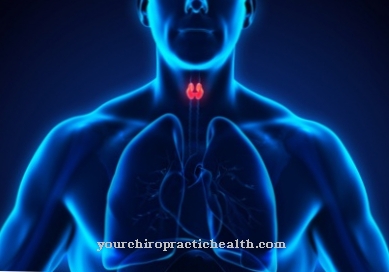As Mud bath is a full or partial bath in water mixed with bath peat. Many health resorts offer mud baths, as bath peat has a good healing effect.
What is the mud bath?

Paracelsus already recommended a mud bath for a wide variety of diseases. In modern times, Napoleon's soldiers ensured that the first German mud baths were built. The first spa that also included mud treatments was in Bad Nenndorf. In the 19th century, mud baths were created in many European health resorts, including Franzensbad, Marienbad, Bad Aibling and Karlsbad. People first became aware of the healing power of the moor by observing animals, as they bathed in the moor water when they had digestive problems or wounds.
In addition to fango, clay, silt and mud, moor belongs to the group of peloids. The term "peloids" comes from the Greek and means something like "mud". Moor occurs when the remains of plants change in the absence of air. In order for the peat to be considered a healing moor, it must contain inorganic and organic components that comply with the regulations. Today, mud is one of the most effective natural healing products, with mud baths, which are often offered as part of cures, are particularly popular.
Function, effect & goals
For a mud bath, bath peat is normally used, which can store heat very well. The peat is extracted in moors, but it can also be bought in pharmacies or health food stores. This makes it possible to use a mud bath at home. In a mud bath, the body temperature rises by around two degrees, thereby influencing the vegetative and endocrine control circuits, which has a positive effect on the immune system and stimulates the metabolism.
The temperature rises very gently and slowly and an artificial curative fever occurs. Because of the overheating, the body's defenses can be mobilized, blood circulation improves and metabolic waste products are released and excreted. In addition, the muscles are relaxed due to the prevailing heat. Bath peat also contains anti-inflammatory substances such as humic acids, and peat treatments also have a relaxing effect on the nervous system.
The heat relieves the pain and the body purifies and detoxifies. The peat also contains many other valuable active ingredients such as silica, copper, iron, manganese, magnesium and calcium. After the bath, the peat is brought back to the extraction areas, where it is extracted again after a regeneration phase of several years. Doctors recommend mud baths especially for:
* gynecological diseases *Rheumatism * Discomfort during menopause *Ankylosing spondylitis *Osteoporosis *Arthrosis
However, patients who suffer from a painful scar after an operation can also benefit. Moor can also help with an unfulfilled desire to have children, as the ingredients have a relaxing and estrogen-like effect. The most common cause of childlessness is luteal weakness. The active substances contained in the moor can lower the hormones that prevent pregnancy. Other hormones that are beneficial for pregnancy are increased.
Above all, the natural tannic acids that can be found in certain types of bog play an important role. For a bath, the peat is mixed with hot water, which results in a very long-lasting heat effect. Moor can also be extremely helpful in acute pain conditions such as in the jaw or tooth area. Due to the healing effect, mud baths are on the program in many health resorts, which are then referred to as mud spa or mud bath. For reasons of hygiene, mud baths are offered as single baths, with temperatures between 40 and 46 degrees. A mud bath takes about 20 minutes, but older people should better take an alternating or partial bath, as the bath strongly stimulates the circulation.
After a mud bath, it is advisable to rest well covered for about thirty to sixty minutes so that the heat can take effect. We recommend about two baths a week for about a month. Athrosis patients then benefit from the positive effects of the bath for about six months. For pain in the shoulder or knee, mud packs are recommended, which are placed in disposable fleece bags on the corresponding areas. In this way, substances that promote self-healing and blood circulation can get into the skin.
This inhibits inflammation and relieves pain. Moor is not only offered in the form of mud baths or packs, but is also suitable for internal use. There is a separate bog runners for this, which can be mixed with water. In addition, so-called "holistic peat therapies" are offered, whereby external and internal applications complement each other. This includes, for example, a combination of mud baths, compresses, drinking cures or wraps.
You can find your medication here
➔ Medicines for relaxation and nerve strengtheningRisks, side effects & dangers
On the other hand, mud baths are not helpful, if not harmful, for:
* sensitive skin *Pregnancy *High blood pressure * open wounds and weeping eczema * Cancers * Varicose veins * Heart disease * chronic inflammatory diseases
Anyone who uses mud baths should also receive medical attention, as a mud bath is relatively strenuous for the circulation and not everyone can tolerate it.













.jpg)

.jpg)
.jpg)











.jpg)